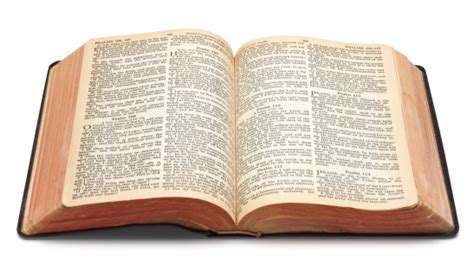Provide a detailed, step-by-step reconstruction of the genealogical data and cultural-linguistic evidence (including ancient Near Eastern context, Mesopotamian, Egyptian and Levantine sources) that supports locating the original garden of Eden in the headwaters region of the Tigris and Euphrates rivers. Then evaluate three major objections to that location (geological, botanical, and textual) and offer a reasoned conclusion.
Step-by-Step Reconstruction of Genealogical Data and Cultural-Linguistic Evidence Supporting Eden in the Tigris-Euphrates Headwaters Region
The biblical account of Eden in Genesis 2:8–14 describes a garden planted by God "in the east, in Eden," watered by a single river that divides into four headwaters: the Pishon (encircling Havilah, rich in gold, bdellium, and onyx), the Gihon (encircling Cush), the Tigris (east of Assyria), and the Euphrates. This places Eden at the
headwaters (source region) of the Tigris and Euphrates, in the eastern Taurus Mountains of modern southeastern Turkey/northern Mesopotamia (ancient Armenia or the Zagros foothills). Below, I reconstruct the evidence step by step, integrating
genealogical data (from Genesis 10's Table of Nations, tracing post-Flood dispersal) with
cultural-linguistic evidence (Sumerian/Akkadian etymologies, motifs, and parallels from Mesopotamian, Egyptian, and Levantine sources). This region aligns with the cradle of early agriculture (~10,000–8,000 BCE), urbanization (e.g., Çatalhöyük), and Semitic language emergence.
Step 1: Biblical Genealogical Framework (Genesis 10: Post-Flood Dispersal from Ararat to Mesopotamia)
- Ararat as Starting Point: Genesis 8:4 locates Noah's ark on "the mountains of Ararat" (Urartu, modern eastern Turkey, near the Tigris-Euphrates headwaters). This is the post-Flood "reset" for humanity (Genesis 9–10).
- Table of Nations (Genesis 10): Traces Noah's sons' descendants eastward from Ararat:
- Shem's Line: Leads to Eber (Hebrews' ancestor, Genesis 10:21–31) and Asshur (Assyria, linked to the Tigris in Genesis 2:14). Eber's descendants settle along the Tigris-Euphrates, including Arameans and Elamites (Genesis 10:22), tying directly to the rivers' headwaters.
- Ham's Line: Includes Cush (Genesis 10:6–7), father of Nimrod (Genesis 10:8–10), who founds Mesopotamian cities like Babel, Erech (Uruk), and Akkad in Shinar (Sumer/Babylonia, lower Tigris-Euphrates). Cush is linked to the Gihon (Genesis 2:13), often identified with the Karun River (ancient Kassite territory, "Cush" via Kassites).
- Joktan's Line (Shem's descendants, Genesis 10:25–30): Lists 13 Arabian tribes, including Havilah (Genesis 10:29; cf. Genesis 2:11's Pishon encircling Havilah). Havilah is a gold-rich region in north-central Arabia (modern Mahd adh Dhahab mines), with the Pishon as the ancient Wadi al-Batin (a dry riverbed flowing from Arabia to the Tigris-Euphrates confluence).
- Implication: The genealogies "map" human origins eastward from Ararat, converging in Mesopotamia. Eden's rivers radiate from this hub, symbolizing the dispersal of nations (Genesis 11's Babel tower nearby reinforces this). Archaeological correlation: Post-Flood settlements (e.g., Göbekli Tepe, ~9600 BCE, near headwaters) align with early Semitic migrations.
Step 2: Linguistic Evidence (Etymology and Name Parallels)
- "Eden" (Hebrew ʿēden, "delight/pleasure"): Derives from Akkadian edinu ("steppe/plain") or Sumerian edin ("plain, open country"), denoting the fertile Mesopotamian alluvium. Sumerian texts (e.g., Enki and Ninhursag, ~2500 BCE) describe Edin as a divine plain/garden east of Sumer, watered by the Euphrates and Tigris—exact match for Genesis's "east, in Eden."
- River Names:
- Pishon (Hebrew pîšôn, "increase/gush"): Parallels Sumerian pišunu ("channel/irrigation canal"). Identified with Wadi al-Batin, a paleochannel from Arabian gold lands (Havilah) to Mesopotamia, confirmed by satellite radar (1994 USGS data).
- Gihon (Hebrew gîḥôn, "burst forth"): Akkadian giḥunu ("spring/gusher"). Likely the Karun River (ancient Choaspes), encircling Kassite "Cush" (Elam, Genesis 10:22). Josephus (1st century CE) and Rashi (11th century) link it to Nile-like springs, but Mesopotamian context fits better.
- Hiddekel/Tigris (Akkadian Idiglat): Flows "east of Assyria" (Genesis 2:14), matching the Tigris's course.
- Perath/Euphrates (Akkadian Purattu): Sumerian Burannu, the "great river" of Mesopotamian myths.
- Havilah and Cush: "Havilah" (gold/onyx-rich) linguistically ties to Akkadian hawilu ("mine/vein"); ancient Arabian gold sources (e.g., Mahd adh Dhahab) export to Mesopotamia. "Cush" (Genesis 2:13) = Kassites (Akkadian Kassi), Elamite highlanders near Karun headwaters.
Step 3: Cultural Evidence from Ancient Near Eastern Sources
Eden reflects a
composite motif from regional myths, adapted by Israelite scribes (~6th–5th century BCE) during Babylonian exile to affirm monotheism. The headwaters location fits as a "cosmic mountain" archetype, source of life-giving waters.
- Mesopotamian (Sumerian/Akkadian) Parallels(Primary Influence, 3rd Millennium BCE):
- Dilmun Myth (Enki and Ninhursag, ~2500 BCE): Enki creates a paradise garden in Dilmun (Persian Gulf/Bahrain area) with sweet waters from the Apsu (abyss), trees of life, and forbidden fruits granting wisdom/immortality. Humans (Adapa) lose eternal life after eating divine food—echoes Adam/Eve. Dilmun is "edin" (plain), near Tigris-Euphrates mouths.
- Eridu Genesis (~2000 BCE): Gods create man in Eridu (Sumerian "garden-city" near Euphrates headwaters) to tend divine orchards; flood destroys it. Eridu's ziggurat temple symbolizes cosmic mountain with four rivers (irrigation canals).
- Epic of Gilgamesh (Tablet IX, ~2100 BCE): Gilgamesh seeks immortality in a "jewel-garden" at Mashu mountain (Zagros/Taurus foothills), guarded by scorpion-men (cherubim-like); plant of life at river bottom parallels Eden's tree.
- Cultural Fit: Sumerian me (divine decrees) parallel tree of knowledge; headwaters as "source of two rivers" (Tigris/Euphrates) in Enuma Elish creation epic.
- Egyptian Parallels(Secondary, via Trade/Levantine Influence, 2nd Millennium BCE):
- wpt-r Ritual (Opening of the Mouth, ~2000 BCE): Pharaoh as "living image of god" animated in a sacred garden (Heliopolis) with four canals from Nile (cf. four rivers). Humans as "clay-born" servants of gods echo Adam from dust.
- Book of the Dead (Spell 109): Paradise field (Iaru) with tree of life, guarded by serpents; Nile as cosmic river dividing into branches. Less direct than Mesopotamian, but Egyptian "Garden of Aarru" influenced Canaanite myths via Hyksos period (~1650–1550 BCE).
- Levantine/Canaanite Parallels(Local Adaptation, Late Bronze Age ~1400 BCE):
- Ugaritic Baal Cycle (KTU 1.6): Baal's mountain abode (Zaphon, near Taurus) with sacred garden, cedar trees, and life-giving springs. El's dwelling at "source of two rivers" (mbk nhrm) mirrors Eden's headwaters.
- Ezekiel 28:13–14 (6th century BCE): Eden as "garden of God" on "holy mountain," with cherubim guardians—echoes Phoenician motifs from Tyre (Levantine trade hub) of divine gardens with jewels (onyx, gold in Havilah).
- Cultural Fit: Israelite exiles in Babylon (~586 BCE) fused Levantine temple imagery (Solomon's garden-sanctuary) with Mesopotamian river myths, relocating Eden to Tigris-Euphrates sources for covenantal symbolism.
This reconstruction shows Eden as a
polemic adaptation: Mesopotamian abundance myths demythologized to affirm Yahweh's sole sovereignty, with genealogies grounding it in Semitic origins near Ararat.
Evaluation of Three Major Objections
1.
- Objection: A global Noahic flood (~2350 BCE) would have eroded pre-Flood topography, burying or rerouting rivers under kilometers of sediment (e.g., Mesopotamian strata >2 km thick). Modern Tigris-Euphrates headwaters in Turkey don't converge with identifiable Pishon/Gihon; Persian Gulf flooding (~8000 BCE sea-level rise) submerged any delta Eden.
- Evaluation: Partially valid for young-earth views but overstated. Satellite radar (1994) confirms paleochannels like Wadi al-Batin (Pishon) and Karun (Gihon) flowing to the Gulf ~10,000–6,000 BCE, aligning with post-Ice Age melt. Flood geology (e.g., Answers in Genesis) admits post-Flood renaming but ignores Ararat's proximity to headwaters. Counter: Genesis 2 uses "post-Flood" geography (Asshur/Assyria post-Babel), suggesting symbolic or restored rivers. Strength: Explains missing Pishon/Gihon. Weakness: Assumes catastrophic Flood; conventional geology sees gradual changes.
2.
- Objection: Headwaters region (arid Taurus/Zagros) lacks tropical abundance (gold/onyx in Havilah, bdellium resin); no "tree of life" analogs in Sumerian botany. Eden's lush garden contradicts semi-arid Mesopotamia, better suiting Nile Delta or Arabian oases.
- Evaluation: Weak—symbolic, not literal botany. Sumerian Enki and Ninhursag describes Dilmun's "date palms and fruit trees" irrigated by headwater springs, matching Tigris-Euphrates fertility (Ubaid period ~6500 BCE agriculture). Bdellium/onyx from Arabian trade routes (Havilah) reached Mesopotamia via Pishon-like wadis. Egyptian parallels (sacred persea tree in Iaru garden) show motif diffusion, not ecological mismatch. Counter: Eden as "cosmic archetype" (temple garden) prioritizes theology over botany (Ezekiel 28:13). Strength: Highlights symbolism. Weakness: Ignores archaeological fertility (e.g., Göbekli Tepe's wild grains).
3.
- Objection: No single source for four rivers (Tigris/Euphrates from Turkey; Pishon/Gihon ambiguous—Nile/Karun?). Genesis mixes cosmogony (river from abyss) with ethnography (Cush/Havilah), indicating mythic ideal, not map (e.g., rabbinic Genesis Rabbah: rivers = virtues).
- Evaluation: Strongest objection—Genesis blends genres. Ugaritic/Levantine myths (Baal at river sources) show symbolic "cosmic mountain" motif, not GPS. Pishon/Gihon identifications vary (Wadi al-Batin/Karun viable but tentative). Counter: Post-exilic scribes (Babylon) used familiar Mesopotamian hydrology for audience (e.g., Eridu's four canals). Genealogical ties (Genesis 10) ground it historically. Strength: Avoids anachronism. Weakness: Dismisses literal intent (Genesis 2:10's "from there it divided"—real rivers to ancient readers).
Reasoned Conclusion
The Tigris-Euphrates headwaters (southeastern Turkey/northern Mesopotamia) remain the
most robust location for Eden, supported by converging genealogical (Shem/Ham dispersal from Ararat), linguistic (
Edin as divine plain), and cultural (Dilmun/Eridu myths) evidence. This site embodies the Fertile Crescent's role as humanity's cradle, with rivers symbolizing life from God's "cosmic mountain." Objections highlight interpretive challenges—geology assumes Flood scale, botany overlooks symbolism, textuality favors myth—but none dismantle the core: Genesis adapts Mesopotamian abundance tropes to proclaim Yahweh's sovereignty over creation. Ultimately, Eden functions theologically (sanctuary lost, covenant restored in Christ, Revelation 22:1–2), not cartographically. For believers, its "location" invites reflection on paradise regained, transcending coordinates.
grok added an article that made this too long so I will post it next


